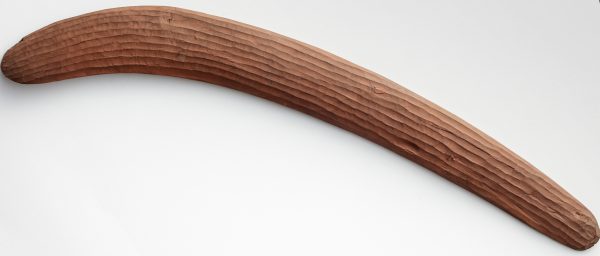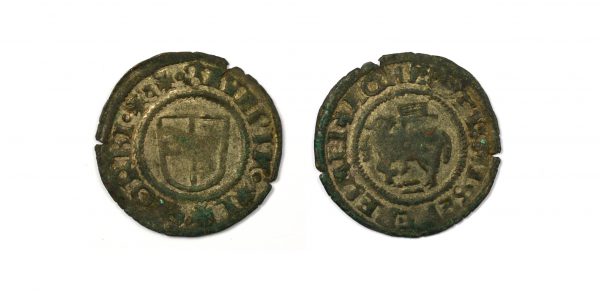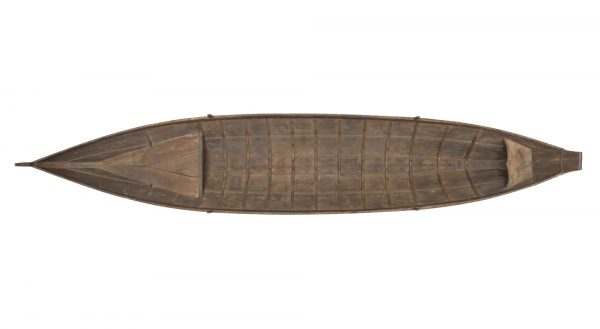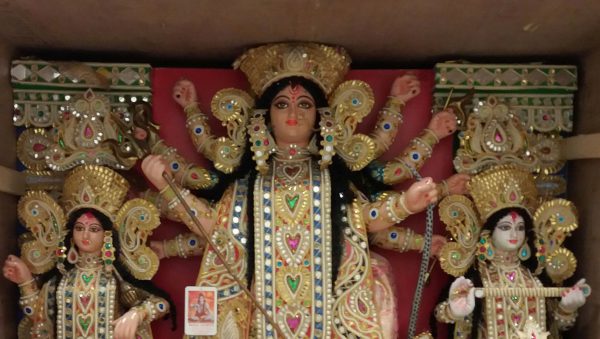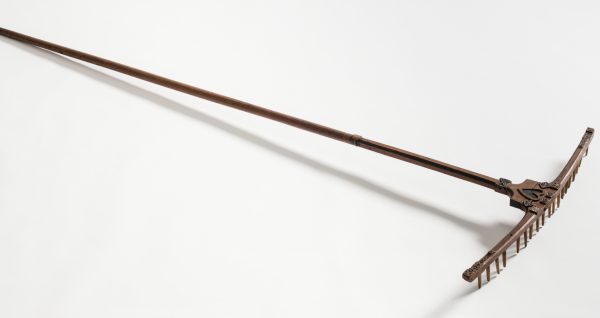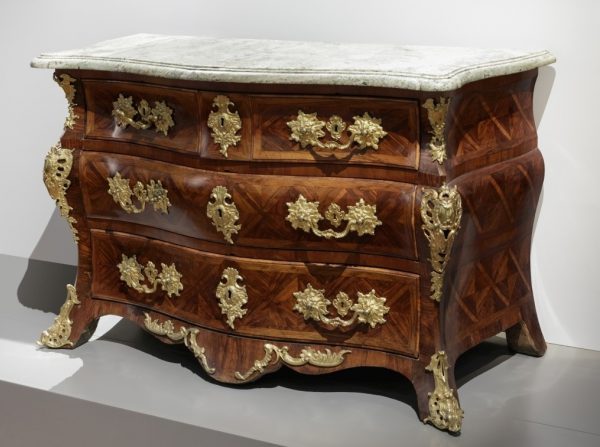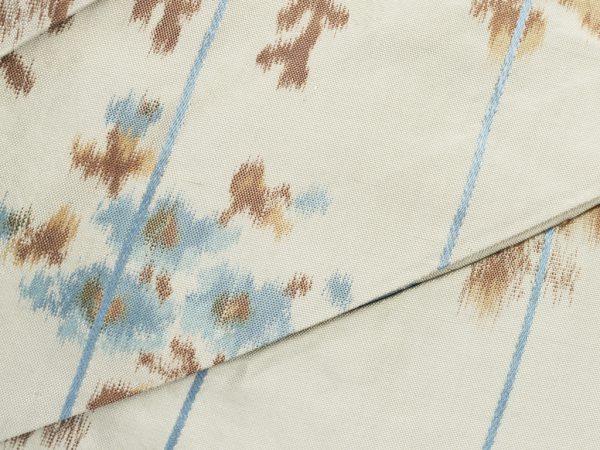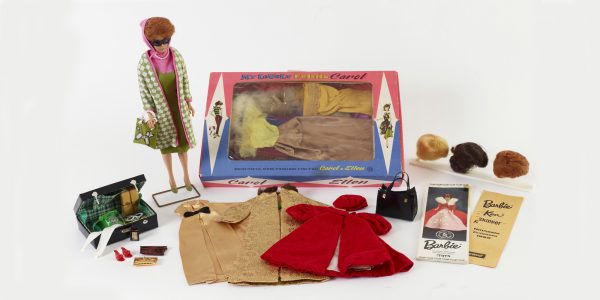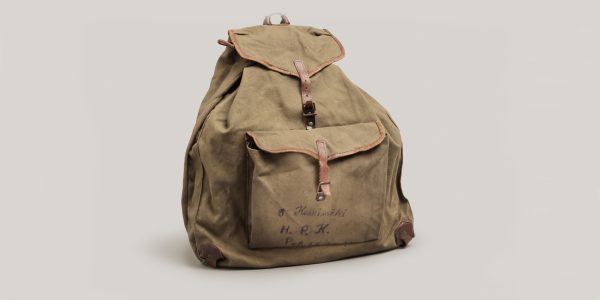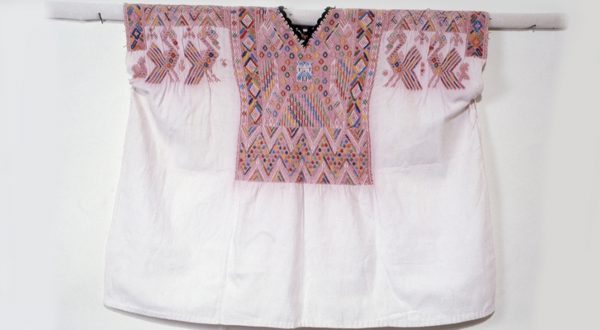A woman’s huipil from Guatemala
Artefact of the month - January 2018
The ethnographic collections of the Museum of Cultures feature hundreds of contemporary Maya textiles, 66 of which are huipils made in Guatemala in the 1960–90s. The huipil is a square or rectangular blouse made from two or more fabric widths stitched together and folded at the shoulders, with an opening for the head but not necessarily any side seams. The fabric is usually woven on a backstrap loom instead of a treadle loom, whose products are not considered handmade by Mayas. Originally, even long huipils hung loose over skirts like tunics, but the Mayas adopted the European habit of tucking the hem into the skirt. Maya women’s dresses have retained their originality better than men’s clothing, and the patterns and colours of the blouses are still connected with the ancient Maya culture and its symbolism. Based on these, it has been possible to link the blouses with a certain Maya group and a certain village. 40% of the population of Guatemala still speak one of the 21 different Mayan languages, even though the classic period of the Maya civilisation ended in the 10th century.
The K'iche' Maya festive blouse consists of three fabric widths joined together, with the sides hand-sewn and the fabric patterned by an additional weft, mainly by threading pink rayon thread. The pattern motif in the central panel, below the neckline, is a double-headed eagle whose body features diamond shapes made with cotton thread in various colours. There is a zigzag stripe below the eagle. The side panels also feature birds and geometric patterns – two large peacocks that have bent their necks on side and a smaller bird behind them.
Weaving is a natural way to create geometric ornaments. The diamond motif has its origins in the clothing patterns of nobility and clergy depicted in ancient Maya murals, stone reliefs and ceramics. It has been interpreted as a symbol of the universe. The horizontal zigzag stripe represents the Feathered Serpent, the ancient deity of fertility and wind of Mesoamerican Mayas and Aztecs. Apparently, the Spanish conquerors did not recognise the geometric patterns as part of the Maya mythology, since they did not prohibit their use.
The most common representational motifs in Maya textiles are birds in profile. For example, fowls and the eagle, which is featured in Popol Vuh, the sacred book of the K'iche' people, are linked with the Maya origin myths. There is no general agreement about the origin of the double-headed eagle motif, but it is known to have been used as a royal symbol by the Hittites. While known in Europe from coats of arms (e.g. King Charles I of Spain, Carlos V in Latin America), the motif also has pre-Hispanic roots and an old Maya name in both the K'iche' and Kaqchikel Maya languages. Thus, this old Maya pattern motif was also preserved and not considered a threat by the Spanish conquerors, who thought it had been adopted from Europe.
Each Maya community originally had its own distinctive pattern models, but the significance of the old symbols has gradually decreased. Globalisation has also brought external influences to remote Guatemalan villages. On the other hand, the coming of tourists has led to a revival in the production and appreciation of old pattern models and styles thanks to the increased sales of ‘antiques’. However, the tourist market has also been supplied with handicrafts made of cheap materials and requiring less work. Colours, models and techniques are increasingly subject to borrowing and swapping. Textile design and the weaver’s own preferences are also gaining significance. Even though the Guatemalan textile tradition is changing and new hybrid clothes are being developed, they still express the Maya identity.
Heli Lahdentausta
Literature:
The Maya Textile Tradition 1997. Margot Blum Schevill (ed.). Harry N. Adams, New York.
Osborne de Jongh Lilly 1965. Indian Crafts of Guatemala and El Salvador. University of Oklahoma Press, Norman.
Popol Vuh. El Popol Vuh – Antigua historia del quiché. Ulla Ranta & Helinä Karttunen (eds.) 1995. Like, Helsinki.
Schevill Margot Blum 1989. Evolution in Textile Design from the Highlands of Guatemala. Lowie Museum of Anthropology, University of California, Berkeley.
Sperlich Norbert & Elizabeth Sperlich 1980. Guatemalan Backstrap Weaving. University of Oklahoma Press, Norman.


